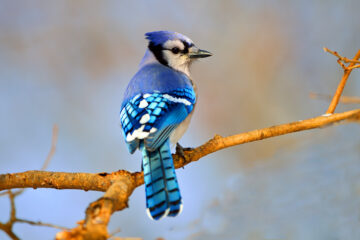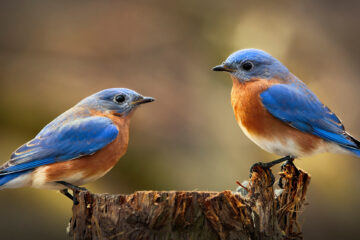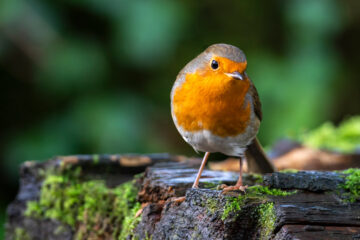Clearer Views, Closer Encounters: The Ultimate Guide to Selecting the Perfect Pair of Binoculars for Your Birding Adventures!
So you are interested in birding? You would like to get a pair of binoculars? But you have no idea what to look for. That is just fine that is what we are here for. This uber guide is broken down into three different sections. The first section goes through the different levels of binoculars out on the market and what those differences are. The second section walks you through the process of selecting binoculars that work for you. The last and final section walks through misconceptions that many people have when selecting binoculars. The goal is to make sure that you have the right tool for you. So when you are out in the brush enjoying the adventure you aren’t worried about your binoculars.
What levels of Binoculars are there?
When it comes to birding binoculars, there are different types or levels of quality and performance. These tiers are typically categorized as entry-level, mid-level, and advanced-level binoculars, each with its own set of features and capabilities. It is critical that you understand the differences between these levels and why different binoculars are ranked differently.
Entry-Level Binoculars
Discover a whole new world of birdwatching with our curated selection of entry-level binoculars! We have done the work to narrow down the options to the top choice on the market. Our selection of compact and lightweight binoculars are perfect for both beginners and experienced birdwatchers alike. Here are a few of the benefits you’ll enjoy with the entry-tier binoculars:
- Clear, bright, and sharp images of birds and wildlife, thanks to the high-quality lenses and coatings.
- Comfortable and easy to use, with adjustable eyepieces and a non-slip grip that fits comfortably in your hands.
- Affordable price that won’t break the bank, allowing you to invest in other birding equipment or take more trips to explore new birding destinations.
Entry-level binoculars are the most affordable and basic type of binoculars. They are typically designed for beginners or casual users who want to enjoy birdwatching or other outdoor activities without breaking the bank. These binoculars usually have lower magnification and smaller objective lenses, which means they provide a narrower field of view and lower light-gathering capabilities.
View Our Entry-Level Binoculars Recommendations
Mid-Level Binoculars
Upgrade your birdwatching experience with our mid-level binoculars for birding! Designed with the avid birdwatcher in mind, these binoculars offer a range of features and benefits that make spotting and identifying birds easier and more enjoyable than ever before:
- High-quality optics and coatings that provide exceptional brightness, clarity, and color accuracy, even in low-light conditions.
- Durable and weather-resistant construction, allowing you to use them in any outdoor environment and in any weather conditions.
- Comfortable and ergonomic design, with a smooth focus mechanism, twist-up eyecups, and a non-slip grip that fits perfectly in your hands.
Mid-level binoculars are the next step of performance and features when it comes to binoculars. They offer better image quality and more advanced features than entry-level binoculars but are still more affordable than high-end binoculars. These binoculars usually have higher magnification and larger objective lenses, providing a wider field of view and better light-gathering capabilities.
View Our Mid-Level Binoculars Recommendations
Advanced-Level Binoculars
Take your birdwatching to the next level with our advanced-level binoculars for birding! Designed for serious birdwatchers who demand the best performance and features, our binoculars offer unparalleled clarity, precision, and durability:
- Cutting-edge optics and coatings that deliver the highest levels of brightness, resolution, and contrast, providing stunningly clear and detailed images of birds and wildlife.
- Robust and rugged construction, with premium materials and coatings that are resistant to scratches, impacts, and weather, ensuring that your binoculars can handle even the toughest conditions and last for many years.
- Versatile and adaptable design, with a range of advanced features such as interchangeable eyepieces, close-focus capability, and image stabilization, allowing you to customize your viewing experience and capture stunning photos and videos of birds and wildlife.
Advanced-level binoculars tend to be the most expensive and have all the bells and whistles in binoculars. They are designed for serious birders, wildlife enthusiasts, or professionals who demand the highest level of performance and image quality. These binoculars usually have the highest magnification and largest objective lenses, providing the widest field of view and best light-gathering capabilities.
View Our Advanced-Level Binoculars Recommendations
The differences between different levels of binoculars lie in their performance, image quality, and additional features. Entry-level binoculars are the most affordable and basic, mid-level binoculars offer better image quality and more advanced features, and advanced-level binoculars are the most expensive and high-end. The tier you choose will depend on your specific needs, preferences, and budget. Whether you’re a beginner or an experienced birder, there’s a binocular out there that will suit your needs and help you enjoy birdwatching even more.
Selecting Binoculars Process
One of the most important tools for birding is a good pair of binoculars. In this section, we will guide you through the process of selecting binoculars the right binoculars for you and offer tips on what to do and what not to do.
Step 1: Determine your budget
Before you begin shopping for binoculars, it’s important to decide on your price range. Binoculars can be between $50 to over $2,000, so setting a budget can help narrow down your options and ensure that you’re getting the most out of every dollar.
Step 2: Consider the Magnification and Objective lens size
The two most important factors to consider when selecting binoculars are magnification and objective lens size. Magnification is represented by the first number in the binoculars’ specifications, such as 8x or 10x. Having a magnification of 8x or 10x is ideal for birdwatching, as it provides a good balance of magnification and field of view. Objective lens size is represented by the second number in the binoculars’ specifications, such as 32mm or 42mm. The larger the objective lens is the brighter and sharper the images you see. The downside is it also makes the binoculars heavier and more expensive.
Step 3: Choose the right type of binoculars
There are two main types of binoculars: Roof Prism and Porro Prism. Roof prism binoculars are more compact and lightweight, making them a good choice for birders who want to travel light or have limited storage space. Porro prism binoculars are typically less expensive and offer a wider field of view, making them a good choice for birders who want to cover more ground.
Step 4: Look for additional features
Binoculars come with many different features that can make the process overwhelming. Some of the top features to look for include:
- Waterproof and fog-proof construction, which can protect the binoculars from damage in wet or humid conditions.
- Close focus distance, which allows you to focus on objects that are close to you, such as birds on the ground.
- Eye relief, which is the distance between the eyepiece and your eye. A longer eye relief can provide a more comfortable viewing experience, especially for people who wear glasses.
- Coated lenses, which improves image quality and reduce glare.
Step 5: Read reviews and compare products
Once you have narrowed down your options based on your budget, magnification, objective lens size, and additional features, it’s time to read reviews and compare products. Look for reviews from other birdwatchers or outdoor enthusiasts who have used the binoculars in similar conditions to those you will encounter. Comparison charts and tables can also be helpful for comparing different models and their features.
Selecting binoculars for getting started in birding can seem like a daunting task, but by following these tips, you can do it efficiently and effectively. Determining your budget, considering magnification and objective lens size, choosing the right type of binoculars, looking for additional features, and reading reviews and comparing products are all important steps to take when selecting binoculars for birding.
Misconceptions about selecting Binoculars
Binoculars are a must-have tool for any avid birdwatcher, but there are many misconceptions out there that can prevent birders from choosing the right binoculars for their needs. Here are some of the most common misconceptions about binoculars for birding and how to correct them.
Misconception #1: High Magnification is Always Better
Many birders believe that the higher the magnification, the better the binoculars are for birding. While magnification is important, it’s not the only factor to consider. A higher magnification means a smaller field of view, making it harder to locate and track birds in flight. A magnification of 8x or 10x is ideal for most birdwatching situations, providing a good balance of magnification and field of view.
Misconception #2: Bigger is Always Better…Right?
Larger binoculars may seem impressive, but they can be heavy and cumbersome to use for extended periods of time. Additionally, larger lenses can be more expensive and may not provide a significant improvement in image quality over smaller lenses. Compact and mid-size binoculars can be just as effective as larger ones, especially for birders who want to travel light or have a smaller budget.
Misconception #3: All Binoculars are Waterproof and Fogproof
Many birders assume that all binoculars are waterproof and fog proof, but this is not the case. Cheaper binoculars may not have any waterproofing or fog proofing at all, making them vulnerable to damage in wet or humid conditions. Look for binoculars with O-ring seals and nitrogen or argon purging to ensure they are waterproof and fog proof.
Misconception #4: Expensive Binoculars are Always Better
While it’s true that high-end binoculars can offer superior image quality, features, and durability, they may not be necessary for all birders. Mid-range binoculars can offer excellent performance at a more affordable price point, making them a great choice for beginners or birders on a budget. Additionally, some high-end binoculars may have features that are not necessary for all birders, such as image stabilization or interchangeable eyepieces.
Misconception #5: Binoculars Don’t Need to be Maintained
Binoculars are an investment, and like any investment, they require regular maintenance to stay in top condition. Keeping your binoculars clean, dry, and properly stored can help prolong their lifespan and maintain their performance. Additionally, lubricating the focusing mechanism and keeping the lenses free of dust and debris can ensure that you always get the best possible image quality from your binoculars.
There are many misconceptions about binoculars for birding, but understanding the factors that matter most for your birding needs can help you choose the right binoculars. Magnification, size, waterproofing, price, and maintenance are all important considerations, and knowing how to separate fact from fiction can help you get the most out of your birdwatching experience.
No matter what you choose, take your time and make sure you understand what you are purchasing. Having a good set of binoculars can really make or break your birding experience. Hopefully, our guide will help you select the right pair of binoculars for you and avoid the mistakes many of us make in the beginning. We look forward to seeing you out there for your Big Year! And as always remember – Explore More, Worry Less!



0 Comments